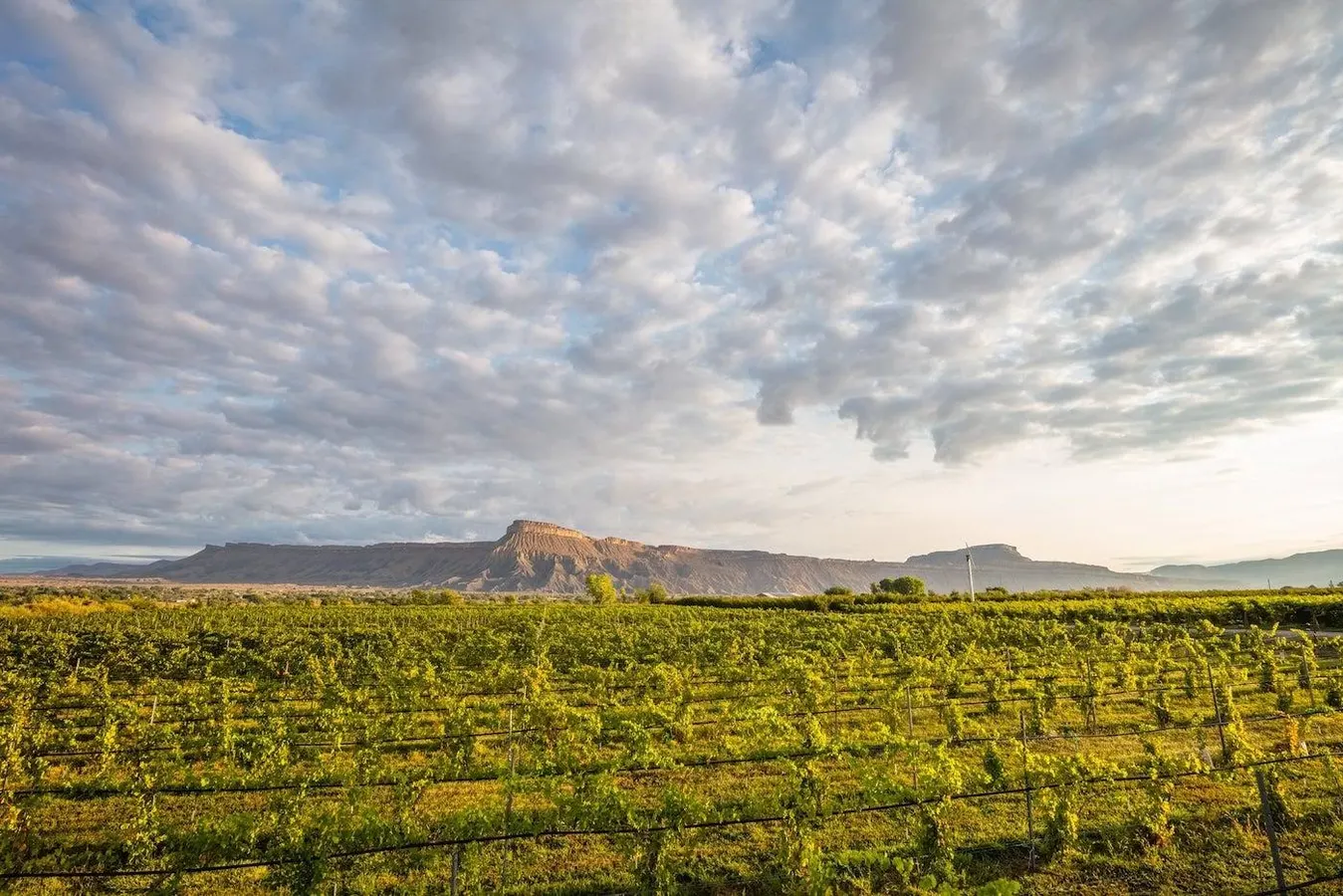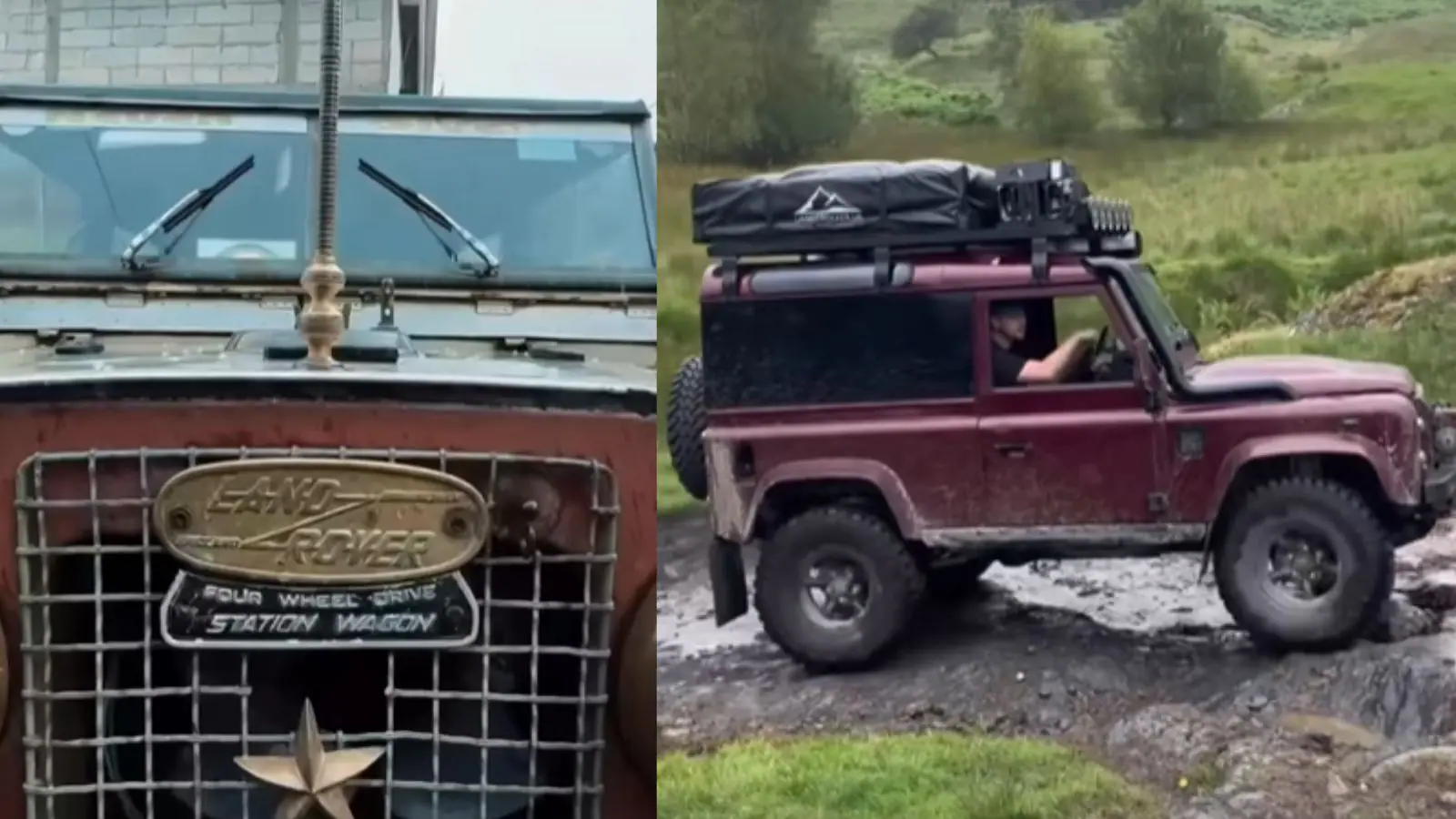Copyright forbes

The Grand Mesa, just outside Palisade in Colorado's high altitude wine country. John Fielder Wine lovers are inherently intrigued by terroir, for great wine regions are defined not only by their talented winemakers, but also the landscapes that come, inevitably, to represent style and personality. In thinking of the steep schist slopes that fall into the Mosel River in Germany, the misty forests of California’s Anderson Valley, or the rolling hills separating the medieval villages of Chianti, we can somehow feel these territories in the glass. What then of Colorado’s high desert plains? Here, vines are planted at altitudes that fray the nerves of even the most experienced risk taker - between 4,000 and 7,000 feet above sea level. This hostile environment poses both opportunity and threat. Frost can strike when buds are barely formed. Water is scarce and winds sweep across the plateaus, drying soils and stressing plants. The intense light means even minor errors in canopy management can leave grapes scorched. Yet successfully navigating these risks gives Colorado wine its personality. Days are pinching hot and intensely bright, yet nighttime temperatures drop sharply. If all goes to plan, and it often doesn’t, the end of season fruit is thick skinned, but ripe, and gives concentrated, fragrant wines with a wicked edge of freshness. Grape grower Kaibab Sauvage, who formed Sauvage Spectrum with winemaker Patric Matysiewski in 2019 captures the jeopardy perfectly: “let’s be honest, farming grapes here isn’t for the faint of heart. This is the high-wire act of viticulture. Our winters can be brutal. One wrong swing in the weather and you can lose a vintage, or a vineyard. We’re at the mercy of frost, drought, and the raw unpredictability of farming in the high desert.” It’s risky. Sometimes painfully so, but he wouldn’t trade it. “When it all comes together,” he says, “when the buds break clean, the summer is long and hot, and the fruit ripens properly, what you get is pure alchemy. I don’t think any other region can replicate what happens here. That’s the payoff. That’s the addiction.” A farmer works the vineyards in Palisade, in The Grand Valley AVA. Denver Post via Getty Images The majority of Colorado’s wine industry is located in the Grand Valley AVA, which is to say, the area around the small town of Palisade, on the outskirts of Grand Junction. Around 800 acres of vineyards line the valley slopes, supporting more than thirty wineries and tasting rooms. With hospitality standards improving year after year, this close-knit community of growers has become increasingly excited about the future. Scott High, founder of Colterris Wines, is even more ambitious. “We’re making world class wines here, there’s no doubt about it.” The first vintage was made in 2008, and a tasting room opened in 2010. His family winemaking operation has since grown to become the largest estate-grown winery in the state. The area is fortunate enough to have the $ 1million breeze coming through. It’s called that because it saves about a $1 million of fruit each year. “Even so,” he says. “There’s an old Roman saying that where peaches grow, good wines will grow, and Palisade is famous for its peaches.” The bright sun light showering the vines at Restoration Vineyards. Restoration Vineyards Linda and Gary Brauns purchased the “dead vineyard” in 2012, a seven-acre plot that had originally been planted in 2007. The vines were given a 50/50 chance of viability by Bruce Talbott, a 5th generation Palisade grower. With Bruce’s help, the vines were watered extensively and within a few months, they showed their resilience and produced a small harvest of grapes that very first year. The story of Restoration Vineyards began. “Linda Braun echoes other viticultural pioneers when she says, “that sense of risk and reward is at the heart of why we chose to invest here.” For Sauvage Spectrum experimentation and creativity remain at the heart of the idea though, as grape varieties such as Albariño and Teroldego are utilised. In typically down to earth fashion, Sauvge notes “I wish I could tell you a romantic tale of wandering through sun-drenched European vineyards, falling in love with exotic grapes, and smuggling cuttings back in my suitcase.” Nature ultimately decides what stays planted. “If a grape can handle a mountain winter, it might just stand a chance here.” Colorado’s other major appellation, the West Elks AVA, receives far less attention. Here, twelve wineries work at even higher altitudes and in cooler conditions. It’s harder for red grapes to ripen fully, so white varieties such as Riesling and Sauvignon Blanc take the lead, producing wines of crispness and vitality. Brent Helleckson and his wife were keen to pursue a more agrarian life after career jobs in aerospace and software. They looked up opportunities in Minnesota and North Dakota, where they were from, but discovered that one needed 5,000 acres of wheat ground, and all of the gear to farm it in order to make a living. “If one had the $10 million to get into commodity farming, why would you ever spend it on, well, getting into commodity farming?” says Brent dryly. They opted for fruit farming on the Western Slope of Colorado, near Paonia. Stone Cottage Cellars was founded in 1994. Helleckson notes that “being ‘connected’ to the land is something we sought out, but little did we know what that would actually involve, and how hands-on our new life would be.” The vineyards are sustainably farmed at between 4,500 ft and 6,500 ft in elevation, producing wines that “exhibit a crispness, vitality, and minerality that reflect the Colorado mountains visible from our cellar door.” A view of Mount Lamborn in the West Elk Mountains, in Paonia, Colorado Stone Cottage Cellars It seems that the sense of adventure and precarity of this terroir that draws people in. Some, like Jayme and Steve of Storm Wines, left sommelier careers in New York to start from scratch in the high desert, fuelled by the same mix of curiosity and risk that seems to define all of Colorado’s wine business pioneers. “We were both mesmerized by the idea of making wine in Colorado’s extremely variable continental climate. We didn’t want cookie-cutter wines; we wanted wines that expressed the dramatic climatic situation that is Western Colorado.” Most thought them crazy to leave stable jobs for winemaking, but perhaps more so when they opted to focus solely on whites and rosés and not make red wines. “Our brand is every bit as much about the two of us, as it is the place that we chose to make wine. It is a personal story about our winemaking adventure, but we’re absolutely happy to represent the state of Colorado as a whole and to showcase what this state can offer in the realm of fine white and rosé wines.” So far, their choices have been Chardonnay and Pinot Noir, both destined for sparkling, and Albariño, as well as the new cold-hardy hybrid Itasca. Pinot Noir does show compelling promise in the West Elks though, and Alfred Eames, whose winery lies just south of Paonia, cultivates the variety at around 5,400 feet. Good vintages provide wines with richness, and a depth of character, but also energy and acidity that reflects the altitude. These wines are a long way from the opulent, fruit-driven style of California’s most powerful Pinots. For now there are just two AVAs, but there are conversations around how Colorado’s wine story will unfold. It’s a huge state, and while no news is imminent, official recognition of other winemaking zones seems inevitable. Buckel Family Wines is based in Gunnison, a good two hours from Palisade. Here the territory is also suited to making quality wine. Joe Buckel, who in keeping with a theme, describes himself as ‘the risk taker’, has developed a reputation for making quality Pinot Noir. Further south still, Englishman Ben Parsons is producing high quality sparkling under the brand Ordinary Fellow. Fruit is sourced from Box Bar Vineyard, located on the Ute Mountain near the town of Cortez and the Navajo Nation reservation. At 6,000ft it’s one of the highest parcels of vines in the state, but again, outside of a recognised AVA, the labels state Colorado wine. So, what does the world need to know about Colorado’s wines? These are undoubtedly frontier projects, sustained by grit and conviction rather than large corporate budgets. Trial and error remain part of daily life. In this uncharted landscape, there is no room for vanity projects, only the hard-earned understanding that each vintage depends on the will of nature. By way of example, the freezing temperatures of 2019 and 2020 caused colossal damage and inspired all sorts of business experimentation. Everyone rolled up the sleeves and endeavoured to learn from it. Gary Braun says, “we’re proud to be part of Colorado’s evolving wine story. Each vintage raises the bar, and with collaboration among various wine families, the standard continues to rise.” Helleckson’s take is that “the wine culture here is absolutely not pretentious and offers excellent wines and wine-related adventures that are actually affordable.” Sauvage believes Colorado’s wines carry the soul of a place that doesn’t follow the rules. “They don’t try to imitate Bordeaux, Burgundy, or Napa,” he says, “they are unapologetically Colorado. And that’s what makes them so exciting.” Editorial StandardsReprints & Permissions



